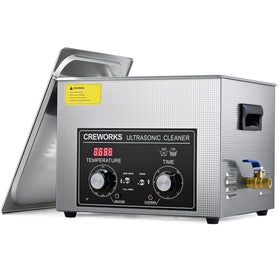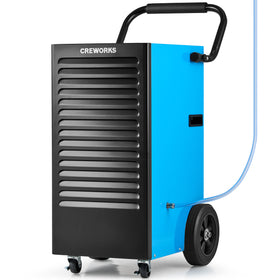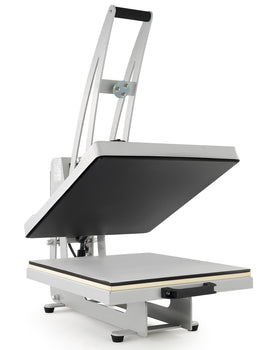With over 10000+ orders
With over 10000+ orders
Ultrasonic cleaners for gun parts have been a game-changer in the field of firearm maintenance, providing an improved substitute for conventional cleaning techniques. Equipped with cutting-edge technology, these elegant ultrasonic cleaners for gun parts can drastically simplify the cleaning process of firearms. This guide will walk you through the intricate details of gun ultrasonic cleaners, helping you learn what you need to know about ultrasonic gun cleaners.
Ultrasonic cleaning utilizes high-frequency sound waves to create a process known as cavitation. Cavitation involves the formation and implosion of microscopic bubbles in a cleaning solution, which generates a powerful scrubbing action that can reach into the most inaccessible parts of firearms. During the cleaning process, these bubbles burst with significant energy, dislodging dirt, grime, and residues from gun parts.

Deep Cleaning: The efficiency of a good ultrasonic gun cleaner in removing various types of residues is unmatched. Traditional methods often leave behind residues in hard-to-reach areas, which can degrade the firearm's performance over time. Ultrasonic cleaning, on the other hand, reaches these hidden areas with ease, offering a comprehensive clean that manual cleaning cannot provide.
Time Efficiency: An ultrasonic cleaner for gun parts can drastically reduce the time required for cleaning, allowing for quick maintenance and more time for other activities.
Preservation of Material Integrity: Ultrasonic gun cleaning is gentle on materials, ensuring that the sensitive parts of your gun parts are not damaged during the cleaning process.
A high-quality ultrasonic cleaner for gun parts can have many good features. The following are some important features that you can focus on when you try to select the best ultrasonic gun cleaner for yourself.
High Frequency and Power The frequency of the ultrasonic waves can greatly affect the ultrasonic cleaner's efficiency. Generally, higher frequencies are ideal for delicate items. Most cleaners typically operate at 40 kHz. The power output of the gun ultrasonic cleaner should also match the cleaning requirement. Higher power is usually needed for heavier contamination.
Compatibility of Your Gun Parts: The choice of an ultrasonic gun cleaner should be guided by the types of firearms you own. Different cleaners are designed to accommodate various sizes and types of firearms. The capacity of the cleaner is also crucial—larger cleaners can handle multiple handguns simultaneously, making them suitable for gun shops or frequent shooters who need to clean several weapons at once.
High-Quality Construction: The durability and safety of the gun ultrasonic cleaner are greatly influenced by its build quality. Opt for ultrasonic gun cleaners crafted from robust materials such as stainless steel, which offers excellent resistance to rust and corrosion, enhancing longevity. Furthermore, ensure that the cleaner is well-sealed to prevent water from leaking into the electrical components.
There are many good ultrasonic gun cleaners on the market. However, if you are interested in finding one of the top and most recommended cleaners for gun parts or other elongated objects, CREWORKS’ 10L Digital Ultrasonic Cleaner is what you are looking for. This ultrasonic cleaner for gun parts has 240W of ultrasonic power to efficiently clean narrow and hard-to-reach areas. It can operate at 40kHz, creating cavitation in a 10L basin to remove grime without harsh chemicals. With 300W heating power, a digital control panel, and durable stainless-steel construction, this machine combines functionality with ease of use.
After you get your ideal ultrasonic gun cleaner, you can enjoy the advanced ultrasonic cleaning technology. However, encountering issues with your gun ultrasonic cleaner can be frustrating. Here are common problems and how to solve them:
Reduced Cleaning Effectiveness: If your gun ultrasonic cleaner isn’t cleaning as effectively, check to ensure that the cleaning solution is fresh and correctly formulated. Also, ensure the items are not overloaded and there’s enough space for cavitation to occur effectively.
Strange Noises or No Cavitation: Unusual sounds or lack of cavitation can indicate a problem with the ultrasonic generator or transducers. Ensure that the device is plugged into a compatible power source and that the transducers are securely attached and not damaged.
Heater Not Working: If the heater isn’t functioning, check the thermostat settings and ensure it is not set too low. If the settings are correct, the heating element may need to be replaced.
Unit Not Turning On: This may happen due to electrical issues. Check the power cord, plug, and fuse. Replace the fuse or cord if damaged. Always ensure the unit is dry before plugging it in to avoid short circuits.
Proper use of ultrasonic cleaners for gun parts involves key safety measures to prevent accidents and ensure safe operation:
Read the Manual: Before operating your ultrasonic gun cleaner, thoroughly review the manufacturer's manual. It provides crucial information on proper setup, usage, and safety precautions tailored to your specific model.
Use Recommended Solutions: Only use cleaning solutions that are specifically recommended by the manufacturer. This ensures compatibility with your device and avoids damage or unsafe chemical reactions that can occur with improper solvents.
Electrical Safety: Ensure that your device is properly grounded to prevent electrical shocks. Regularly inspect the power cord and plug for wear or damage, and replace them if necessary to maintain safe operation.
Routine Maintenance: Conduct regular maintenance checks to verify that all components of your ultrasonic gun cleaner are in good working condition. For example, check for any signs of wear on the transducers and ensure that the heater functions correctly. Regular maintenance not only ensures safe operation but also prolongs the lifespan of your cleaner.
Proper maintenance is key to extending the lifespan and enhancing the performance of your ultrasonic gun cleaner. Here are essential care tips:
Regular Cleaning: After each use, clean the tank to prevent any buildup of residues. Use a mild detergent and a soft brush to gently scrub the tank's interior.
Check and Change the Solution: The cleaning solution should not be reused excessively. Change it according to the manufacturer's recommendation or if you notice a decrease in cleaning effectiveness.
Inspect for Wear and Tear: Regularly inspect all components, especially the transducers and heating elements, for signs of wear. Early detection of potential problems can prevent costly repairs.
Storage: Store the cleaner in a dry, cool place away from direct sunlight when not in use to prevent damage to its electronic systems.
Choosing the right ultrasonic gun cleaner is essential for maintaining the efficiency, functionality, and longevity of your firearms. By considering your specific needs and the features that best suit your cleaning requirements, you can select a system that not only cleans effectively but also preserves the quality of your weapons. If you are looking for a good ultrasonic cleaner to clean your gun parts or other elongated objects now, Creworks’ ultrasonic cleaner will be a good choice for you.











